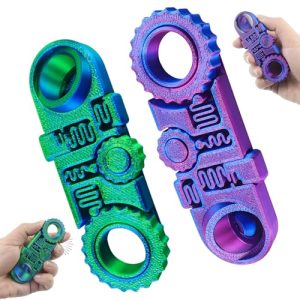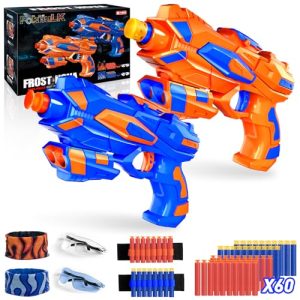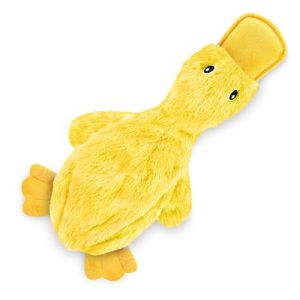Imagine the thrill of creating your very own toy car. You get to choose the design, the colors, and even how fast it can go.
Building a toy car isn’t just about assembling parts; it’s about crafting a miniature world you can control. As you dive into this hands-on adventure, you’ll discover a sense of accomplishment that’s both exciting and rewarding. This guide will show you step-by-step how to make a toy car that not only rolls but races with creativity and fun.
Ready to ignite your imagination and engineering skills? Let’s get started!
Materials Needed
Gather cardboard, plastic wheels, and a small motor for toy car assembly. Include scissors, glue, and paint for decoration.
The materials needed for making a toy car are simple and accessible. You might find most of them at home or a nearby store. Let’s explore what you’ll require.
Cardboard Or Plastic Base
A sturdy base is essential. Use cardboard or plastic. This forms the car’s body. The base should be flat and durable.
Wheels
Wheels are crucial for movement. Use plastic bottle caps or small toy wheels. Ensure they are round and uniform for smooth rolling.
Axles
Axles connect the wheels to the car body. Use wooden skewers, straws, or thin metal rods. They should be firm and straight.
Glue Or Tape
Adhesive materials are necessary. Use glue or tape to secure parts together. Ensure they dry quickly and hold firmly.
Decorative Materials
Personalize your toy car. Use markers, paint, or stickers. Add colors and designs for a unique look.
Scissors Or Cutter
Cutting tools are needed for shaping materials. Use scissors for paper. A cutter works well on cardboard. Always be careful.
Additional Tools
Sometimes, extra tools help. A ruler for measurements ensures precision. A pencil for marking guides your cuts. Gather these materials before starting your project. They ensure a smooth crafting experience. Enjoy building your toy car!
Safety Tips
Ensure all small parts are kept away from young children. Use non-toxic materials to avoid harmful reactions. Always supervise kids during assembly and playtime to prevent accidents.
Creating a toy car can be fun and educational, but safety is key. When crafting with kids, ensure that the project stays safe. Taking simple precautions can prevent accidents and promote a positive experience.
Choose Safe Materials
Select non-toxic materials for your toy car. Check labels on paints, glues, and finishes. Avoid items that could splinter or break easily. Softwood or plastic are great options.
Supervise All Steps
Always supervise children during the building process. Guide them in using tools correctly. Keep sharp objects like scissors or knives out of reach. Encourage asking for help when needed.
Wear Protective Gear
Use protective gear like goggles or gloves. Protect eyes from dust and splinters. Ensure hands remain safe during cutting or sanding. Safety gear is a simple way to prevent injuries.
Keep Workspace Organized
Maintain a tidy workspace. Store tools and materials properly. Clear clutter to reduce tripping hazards. An organized area enhances focus and safety during crafting.
Test The Toy Car
Ensure the toy car is sturdy before play. Check for loose parts or sharp edges. Roll it to confirm smooth movement. A well-tested car ensures safe enjoyment for children.
Designing The Car
Creating a toy car involves selecting lightweight materials and designing simple yet functional shapes. Assemble wheels and axles to ensure smooth movement. Add bright colors for an appealing finish.
Designing a toy car can be an exciting adventure that sparks creativity and ingenuity. Whether you’re crafting a simple model or aiming for a complex masterpiece, the process of designing is where your imagination begins to take shape. Every detail, from the sleek body to the tiny wheels, plays a crucial role in the final outcome. Let’s dive into the heart of designing your toy car and explore how to bring your vision to life.
Choosing A Model
Deciding on the type of toy car you want to create is your first step. Do you envision a speedy race car or a sturdy SUV? Each model has its unique charm and challenges. Reflect on what excites you most about toy cars. Maybe it’s the thrill of speed or the elegance of classic designs. Consider your preferences and the materials you have available. Think about the age group of the users. Younger children might enjoy bright colors and simple shapes, while older kids might appreciate more detailed and realistic features. Your choice will guide the design process and the materials you choose.
Sketching The Design
Once you’ve chosen your model, it’s time to put your ideas on paper. Sketching is a powerful tool that transforms abstract concepts into tangible designs. Grab a pencil and let your creativity flow. You don’t need to be an artist; simple sketches can be incredibly effective. Focus on the main features of your car. How does the body look? Are there any distinctive details like stripes or logos? Visualize the proportions and shapes. You might find inspiration from real cars or create something entirely unique. Consider involving your friends or family. They might have insights or suggestions that can enhance your design. Sharing ideas often leads to unexpected improvements and a fun collaborative experience. Taking the time to thoughtfully design your toy car ensures a rewarding crafting journey and an impressive final product. What will your toy car look like? The possibilities are endless.
Building The Chassis
Crafting a toy car begins with building a sturdy chassis. Use lightweight materials like plastic or wood for easy movement. Ensure the chassis is balanced to support wheels and axles, providing a smooth ride.
Building a toy car is an enjoyable and educational project that sparks creativity and innovation. The chassis serves as the backbone of your toy car, providing a sturdy base to build upon. It’s where the magic begins, giving your creation the strength and balance it needs to zoom across the floor with ease.
Gathering The Base
Start by selecting a solid material for the base. Cardboard is a great choice if you want something easy to cut and shape, while wood offers more durability. Personally, I find using an old CD or DVD adds a fun twist and a smooth finish. Once you’ve chosen your material, decide on the size of your chassis. A smaller base will make the car more agile, while a larger one offers stability. Gather your tools—scissors for cardboard or a small saw for wood—and cut your base to size.
Attaching The Axles
Axles are crucial for a smooth ride and can be made from simple materials like straws or skewers. Measure the width of your base and cut the axles slightly longer to accommodate the wheels. Secure your axles to the base using strong tape or glue. Position them evenly at the front and back to ensure balance. As a kid, I used to test the alignment by rolling the base on a flat surface to see if it moved straight. Your choice of wheels—bottle caps, plastic lids, or LEGO wheels—will determine the car’s speed and traction. Slide them onto the axles and fix them in place. Consider the surface your toy car will race on. Will it be a smooth table or a rough carpet? This decision will guide your choice of wheels and axles. Are you excited to see your creation take shape? Once your chassis and axles are ready, the rest of the car’s structure can be built to match your wildest dreams.
Creating The Wheels
Crafting toy car wheels involves using lightweight materials like plastic or rubber. Attach these to axles for easy rotation, ensuring smooth movement. Shape and size of the wheels can affect the car’s speed and stability.
Creating the Wheels Building wheels for a toy car is a fun process. It requires creativity and some basic materials. The wheels are crucial for the car’s movement and stability. Let’s explore how to make them effectively.
Selecting Wheel Materials
Choosing the right material is important. Cardboard is a common choice. It’s cheap and easy to cut into circles. Plastic caps from bottles also work well. They’re durable and have a smooth surface. Wooden discs can be used for a sturdy option. Ensure the materials are lightweight. Heavy wheels can slow the car down.
Attaching Wheels To Axles
Connecting wheels to axles is vital for functionality. Use a sturdy stick or a thin dowel as the axle. Drill a small hole through the center of each wheel. The hole should fit the axle snugly. Slide the wheel onto the axle. Secure it with glue or a small nail. Ensure the wheels spin freely. Test the wheel movement before finalizing the attachment.

Credit: www.youtube.com
Constructing The Body
To construct the body of a toy car, gather simple materials like cardboard or plastic. Cut and shape the material into the car’s frame, ensuring it’s sturdy. Attach wheels to each corner for movement and paint the exterior for a colorful finish.
Constructing the body of a toy car is an exciting task. This step sets the foundation for your creative project. It involves crafting a sturdy and appealing exterior. A well-made body ensures the car is both functional and fun. Let’s explore how to shape and decorate your toy car body.
Shaping The Body
Start with the base structure. Use cardboard or light wood for durability. Cut out the base, sides, and top. Ensure all pieces fit snugly together. Precision is key for a smooth finish. Secure the pieces with glue or small nails. Allow the structure to dry completely. This forms the backbone of your toy car. Next, create the car’s shape. Use scissors or a cutter for precise edges. Round the corners for a sleek look. Consider the car’s design: sporty or classic. Adjust the shape accordingly. This step defines the car’s personality.
Decorating The Car
Begin with a base coat of paint. Choose bright colors to catch the eye. Acrylic paint works well for smooth coverage. Let it dry before adding details. Use smaller brushes for intricate patterns. Stripes, dots, or flames can add flair. Add stickers or decals for extra character. You can use themed stickers for a unique touch. This enhances the car’s overall aesthetic. Ensure all decorations are securely attached. Your toy car is now both stylish and sturdy.
Adding Details
Adding Details Enhance your toy car by painting it with bright colors and fun patterns. Attach small parts like headlights and side mirrors for a realistic look. Ensure all pieces are securely glued for safe play.
Adding details to your toy car is where creativity really shines. This is the stage where you transform a simple structure into a vibrant, lifelike model. Here, you can truly personalize your creation, making it unique and reflective of your style. Whether you’re aiming for a sleek race car look or a playful cartoon-like design, the details make all the difference.
Painting And Finishing
Choosing the right colors for your toy car can set the tone for its overall appeal. Think about what excites you—perhaps a bright red for a race car or a cool blue for a cruiser. Start with a base coat using spray paint or acrylics for a smooth finish. Don’t rush; allow each layer to dry completely before adding the next one. This patience pays off with a polished look. Once painted, consider adding a clear varnish for extra shine and protection. This step ensures your car remains vibrant and can withstand playtime adventures.
Adding Stickers And Decals
Stickers and decals are perfect for adding personality to your toy car. They are easy to apply and can dramatically change the car’s appearance. Look for themed stickers that match your vision. Are you crafting a superhero vehicle or a classic vintage model? The right decal can complete the look. Ensure the surface is clean before applying to avoid any peeling or air bubbles. Press firmly and smooth out any wrinkles for a professional finish. Remember, the details you add can make your toy car a masterpiece. What story does your car tell?

Credit: m.youtube.com
Testing The Toy Car
Testing your toy car is an exciting phase that brings your creation to life. You get to see how well it performs and discover areas for improvement. Remember, the goal is to ensure it works smoothly and meets your expectations.
Ensuring Functionality
Start by checking if all the components are in place and securely attached. Does the car roll forward without a hitch? If the wheels are sticking or not rotating properly, inspect them for any obstructions.
Try different surfaces to see how your car moves. Does it glide effortlessly on tile but struggle on carpet? Observing its movement on varied terrains will give you insights into its adaptability.
Making Adjustments
Once you identify issues, it’s time to make adjustments. Maybe the axle needs a little lubrication or the body requires a tweak for better balance.
If the car veers to one side, check the alignment of the wheels. A simple realignment can make a huge difference in steering. Don’t hesitate to experiment with small changes.
What can you do to improve its speed or stability? Consider adding weight for stability or adjusting the wheel size for speed. Small tweaks can lead to big improvements.
Fun Games To Play
Creating a toy car is an exciting adventure, but what’s even more thrilling is the plethora of fun games you can play with it. Once your car is ready, it’s time to unleash your creativity and engage in some spirited play. Imagine the joy of racing your toy car against your friends or maneuvering it through challenging obstacle courses. These games not only provide endless entertainment but also foster creativity and problem-solving skills.
Racing Challenges
Nothing beats the thrill of a racing challenge. Set up a track using household items like books or boxes to create lanes. Invite your friends or family for a friendly competition. You can even time each race to see who sets the fastest lap. Racing doesn’t just test speed; it also sharpens your strategic thinking as you decide the best path for your car to take.
Consider adding twists to the race, like requiring drivers to reverse halfway or adding a sharp corner. Does your car have enough grip to handle turns? Experiment with different surfaces to see how they affect speed and control. Racing challenges can be the perfect opportunity to learn about friction and aerodynamics, all while having a blast.
Obstacle Courses
If you’re looking for something a bit more adventurous, try setting up an obstacle course. Use toys, cushions, or even pieces of string to create hurdles and barriers. These courses can be as simple or complex as you like, accommodating any skill level. As you navigate through, pay attention to how your car handles different obstacles.
Try timing yourself or competing with friends to see who can complete the course the fastest. Does your car need a little push to clear a jump? Finding solutions to these challenges can boost problem-solving abilities. Obstacle courses are excellent for fostering creativity, as they encourage you to think outside the box and adapt to the course’s demands.
What other games can you dream up with your toy car? The possibilities are endless, and each one offers a unique chance to learn something new while having fun. Whether you’re racing or navigating obstacles, the key is to enjoy the process and embrace the creativity it sparks.

Credit: www.youtube.com
Frequently Asked Questions
What Materials Do I Need For A Toy Car?
You need cardboard, plastic bottles, and rubber bands for a toy car. Gather scissors, glue, and paint for decoration. Wheels can be made from bottle caps or old CDs. Ensure all materials are safe for children.
How Do I Make Wheels For A Toy Car?
Create wheels using bottle caps or old CDs. Attach them securely with wooden skewers or axles. Ensure they rotate smoothly for a functional toy car. Paint or decorate them for added appeal.
Can I Use Recycled Materials For A Toy Car?
Yes, recycled materials are excellent for toy cars. Use cardboard boxes, plastic bottles, and old CDs. They are sustainable and encourage creative thinking. Ensure all recycled items are safe for children’s use.
How Long Does It Take To Build A Toy Car?
Building a toy car typically takes one to two hours. Time varies based on complexity and materials used. Simple designs are faster, while detailed ones require more time. Plan accordingly for a fun project.
Conclusion
Building a toy car can be a fun experience. You learn to create and solve problems. It’s simple and rewarding. Start with basic materials and tools. Follow each step carefully. Enjoy the process and let creativity guide you. Remember, practice makes perfect.
This activity can enhance your skills. Share your creation with friends and family. Inspire others to try making their own toy cars. Who knows, it might spark a new hobby. Keep exploring new designs and ideas. Enjoy the journey of making toy cars.




